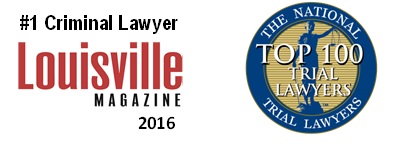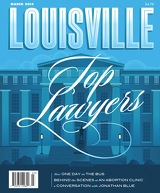Police body camera videos afford the police wide discretion on what to record and what not to record. The body cameras offer police the authority and means to narrate their subjective and incriminating viewpoints on film as the events occurs and later the prosecutor will claim it was a simple spontaneous conversation. In consideration of the use and admissibility of body cam videos at trial the starting point is the hearsay rule. All statements made on the body cam videos are made “outside the courtroom” and are used to prove an asserted fact therefore the statement is HEARSAY. Is body cam video admissible as present sense impression or corroborative evidence of the police officer’s in court testimony? The prosecutor will need to identify a non hearsay purpose for the statement or rely on a hearsay exception. Often the police make very damaging statements on the video which CANNOT be proved by the video itself. Police in DUI stops frequently say” You smell like alcohol’ . The claim of alcohol smell cannot be supported by the video. Or in a drug case the cop says “he just threw something in the bushes” . but the video does not show the accused doing anything except being near a bush. Kentucky courts will start the issue by treating the video as the police officer’s statement under KRE 801 – Prior Statement of Witness, or Present Sense Impression or Recorded Recollection . If the recording officer does not testify the video is inadmissible hearsay. If the recording officer uses the video to corroborate his testimony or as demonstrative evidence then the video has no probative value on its own , and it is only useful because of the witness testimony. In this respect a video used a demonstrative evidence is like a chart or diagram. You must remember that charts and diagrams do not go to the jury deliberation room unless they are entered into evidence as an exhibit. Body cam videos are assertive in nature. The prosecution wants the video admitted and shown to the jury because the videos tell a story that begins with the police in car and siren blaring as they race to the scene ; the accused is identified and then the video ends with an arrest. . The video becomes substantive evidence. Police will claim that the video does not lie, but I argue that police body cam videos do not tell the whole story. Body camera vids only capture the view from the prospective of the police officer wearing the body cam. This creates a point of view bias that creates sympathy for the police. Plus police narrate the video with descriptive statements like “you smell like beer” “what are you trying to hide?” and claims like “field sobriety tests are easy “. Body cams vids give police the opportunity for the lazy and unprofessional cops to manufacture evidence. Body cam vids are not demonstrative evidence because the police officer recorded the video in order to capture evidence to be used in a criminal prosecution. The narrative was purposeful police conduct designed to make an out of court hearsay statement fit into a hearsay exception because of the old evidence rules recognition of the reliability of “spontaneous statements”. The reality is that police video statements are anything but spontaneous. The statements on video are also not demonstrative evidence. Demonstrative evidence is created AFTER the events that caused the arrest or lawsuit transpired. Charts and diagrams are produced after the indictment or lawsuit. Police body cam are produced at the time of the event
Your lawyer needs to request the training manual that police receive regarding use of the video. These manuals will help challenge the admissibility of the video on FOUNDATION grounds. You need to find out when the cop is supposed to turn on the video and turn off the video and then see if he followed the police department training requirements. You need to discover how much pre video activation is recorded. When a police officer turns on the body cam the camera saves 30 seconds or more of video image that occurred prior to the cam being activated. Body cam video can save minutes of pre activation events if programed to do so. Pre activation video footage can help your lawyer police the police.
Recorded Recollection Hearsay Exception is frequently relied on by the prosecutor to admit the body cam video. The RRHE allows out of court statements to be introduced as substantive evidence on the theory that a witnesses’ recollection of events at an earlier time will be more reliable than the same witness’s later testimony from a fading memory. RRHE is found in the Kentucky Rules Of Evidence (KRE ) 803 (5). But you must remember the rule provides that its use is limited to when the witness “now has insufficient recollection ….to testify fully and accurately’. So before the prosecutor can rely on RRHE to introduce a body cam video the police officer who recorded the video must admit that he doesn’t remember the event well enough and he needs the video to refresh his memory. In fact the police officer must testify that after watching the body cam video he has no independent recollection of the event. Despite RRHE’s frequent use in Kentucky courts to admit body cam footage, this hearsay exception should never be permitted to introduce a body cam vid UNLESS the cop admits he does not remember the event. The cop must admit he has a failing memory. Plus, and this is very important, the video itself, when admitted under RRHE does not become substantive evidence. In other words the video can be played to assist the cop’s failing memory but the video is not introduced as an exhibit. This means the jury cannot listen to the video during its deliberations. The video, when used under RRHE, cannot have stronger import than the police officer’s in court testimony.
Commonwealth of Kentucky prosecutors also rely on a hearsay exception called the excited utterance to admit body cam videos. The Excited Utterance Hearsay Exception (EUHE) is found under KRE 803 ( ) . EUHE is a statement relating to a startling event made while the witness was under stress or excitement of that event. The theory is that EUHE statements are inherently reliable because the statement is spontaneous and the mind had not time to think and manipulate the event through cognitive or even unconscious bias. Think of excited utterances statements of the bank clerk during an arm robbery pleading “don’t shoot me” or “he just shot my wife!” .Trial judges in KY are quick to say ‘an agitated mind is much less likely to engage in conscious fabrication than a reflective mind.” In order for EUHE to apply the trial judge must be convinced that the police officer’s emotional mindset was under stress. Did the police officer make an emotion statement? EUHE generally has a stronger application to statements made by the accused on police body cam vids than the statements made by the cop himself. Given the nature of police / citizen interactions the accused is more likely to be excited and say something excitingly spontaneous. The police on the other hand, are trained to follow procedure and police interaction with the public and public investigations are a routine part of their job. To admit the statements made by the police officer on the body cam the court must determine the excitement level of the cop who made the statement. The vid must show that that the cop was really excited. Statements made by police on routine traffic stops or on domestic runs are unlikely to trigger the application of EUHE. Stressful events like a DUI fatality or a shooting are much more likely trigger the application of EUHE for police body cam statements.
The way the prosecutor usually get the police body cam introduced into evidence is through the hearsay exception called present sense impression exception. The Present Sense Impression Hearsay Exception (PSIHE) is an old rule of evidence and is found under KRE 803( ). KRE 803( ) allows for out of court statements to be introduced into evidence if the statement is made while the witness was observing the event or immediately after the event. PSIHE do not require the statement be about an exciting event. Nowadays everyone is carrying a video cam on their person in the form of a cell phone . Events that are boring and commonplace are likely to be recorded. Social media and text posts narrate unexciting events every moment of each day. Police body cam videos make officer’s statements about fairly ordinary police/citizen interaction admissible at trial. If the out of court statement was made at the time of the non-exciting event the PSIHE assumes its contemporaneity ensures its reliability. PSIHE is an old rule of evidence and it assumes that the witness’s verbal description of the event eliminates the danger of a faulty memory. PSIHE statements are recognized to be reliable because of the absence of time for reflection and the unlikely chance for deliberate misrepresentation. More importantly the prosecutor will argue that the video corroborates the statements of the police officers which makes the out of court police statement even more reliable. The reality is that police are manipulating the PSIHE by purposefully making statements that they normally would not say just because the body cam is rolling. Some of the cops statements are going to come in, but the police statements frequently go to the extreme and must be kept away from the jury. These include the statement cops make to each other like “ can you believe what he just did” “he sure was high on something” .
Courts must be aware that police body cams do not tell the entire story. The body cam video is different from what actually occurred. Plus video are susceptible to operator manipulation and editing. . Videos are always suspect focused. In other words what are the cops doing while the video records the accused? Body camera focus creates a bias that favors the perspective of the cameraman. The cameraman is the cop.This of course causes the video to show the police officer’s perspective. Plus the only one who knows the event is being recorded is the cop who is doing the recording. The cop’s awareness the video and the accused ignorance that the event is being recorded allows for event manipulation.
If the police officer’s narration can be characterized as a ‘calculated narration’ to manufacture admissible an out of court statement the trial court can exclude the narrative. … See the case of Fisher v State 252 S.W. 3D 375,Tex. 2008.
If you are being prosecuted and the government case involves video evidence you must hire a lawyer experienced in dealing with body cams ,dash cams, surveillance cameras, cell phone videos and other means of data storage. Call John Olash at 502- 419 -4384 to discuss your options.







